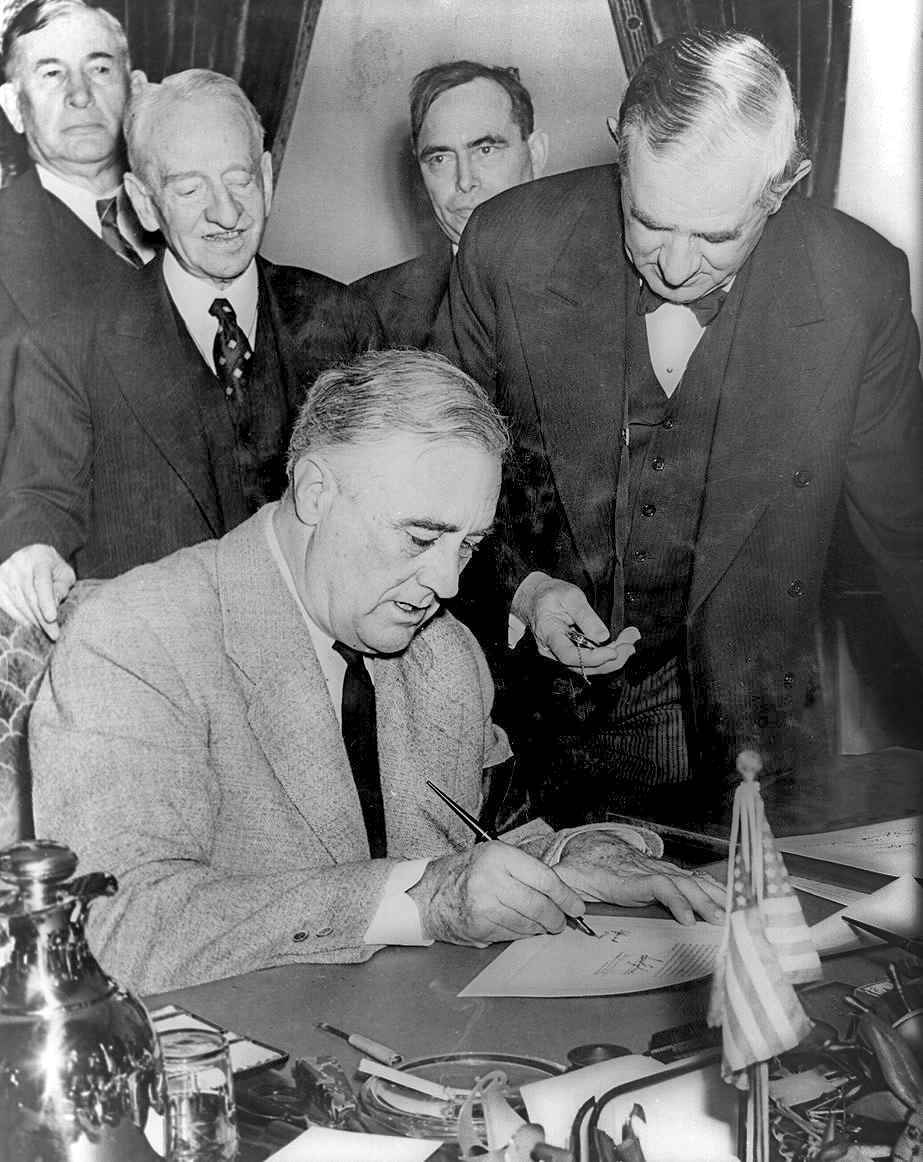United States Declaration Of War Upon Germany (1941) on:
[Wikipedia]
[Google]
[Amazon]
__notoc__
On December 11, 1941, the
 *
*
United States Congress
The United States Congress is the legislature of the federal government of the United States. It is Bicameralism, bicameral, composed of a lower body, the United States House of Representatives, House of Representatives, and an upper body, ...
declared war on Germany
Germany,, officially the Federal Republic of Germany, is a country in Central Europe. It is the second most populous country in Europe after Russia, and the most populous member state of the European Union. Germany is situated betwee ...
(, Sess. 1, ch. 564, ), hours after Germany declared war on the United States after the attack on Pearl Harbor
The attack on Pearl HarborAlso known as the Battle of Pearl Harbor was a surprise military strike by the Imperial Japanese Navy Air Service upon the United States against the naval base at Pearl Harbor in Honolulu, Territory of Hawaii ...
by the Empire of Japan
The also known as the Japanese Empire or Imperial Japan, was a historical nation-state and great power that existed from the Meiji Restoration in 1868 until the enactment of the post-World War II 1947 constitution and subsequent form ...
. The vote was 88–0 in the Senate
A senate is a deliberative assembly, often the upper house or chamber of a bicameral legislature. The name comes from the ancient Roman Senate (Latin: ''Senatus''), so-called as an assembly of the senior (Latin: ''senex'' meaning "the el ...
and 393–0 in the House
A house is a single-unit residential building. It may range in complexity from a rudimentary hut to a complex structure of wood, masonry, concrete or other material, outfitted with plumbing, electrical, and heating, ventilation, and air cond ...
.
Text
See also
 *
* Arcadia Conference The First Washington Conference, also known as the Arcadia Conference (ARCADIA was the code name used for the conference), was held in Washington, D.C., from December 22, 1941, to January 14, 1942. President Roosevelt of the United States and Prime ...
* Declarations of war during World War II
* Diplomatic history of World War II
The diplomatic history of World War II includes the major foreign policies and interactions inside the opposing coalitions, the Allies of World War II and the Axis powers, between 1939 and 1945.
High-level diplomacy began as soon as the war start ...
* German declaration of war against the United States (1941)
*Kellogg–Briand Pact
The Kellogg–Briand Pact or Pact of Paris – officially the General Treaty for Renunciation of War as an Instrument of National Policy – is a 1928 international agreement on peace in which signatory states promised not to use war to ...
*United Kingdom declaration of war on Germany (1939)
The United Kingdom declared war on Germany on 3 September 1939, two days after Germany invaded Poland. France also declared war on Germany later the same day.
The state of war was announced to the British public in an 11 AM radio broadcast by ...
* United States declaration of war upon Germany (1917)
* United States declaration of war upon Italy
*United States declaration of war upon Japan
On December 8, 1941, the United States Congress declared war () on the Empire of Japan in response to that country's surprise attack on Pearl Harbor and declaration of war the prior day. The Joint Resolution Declaring that a state of war exist ...
References
External links
* 1941 in Germany 1941 in international relations 1941 in military history 1941 in the United States Declarations of war during World War II Germany–United States military relationsGermany
Germany,, officially the Federal Republic of Germany, is a country in Central Europe. It is the second most populous country in Europe after Russia, and the most populous member state of the European Union. Germany is situated betwee ...
December 1941 events
1941 documents
Axis powers
{{Germany-WWII-stub